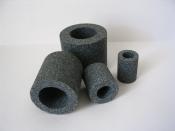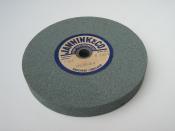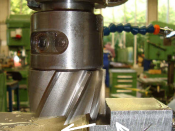Table of Contents
Milling1
Surface Grinding1
Lapping2
Planning2
Shaping/Planing2
Turning/Facing3
Cylindrical Grinding4
Centre-less Grinding5
Honing6
Superfinishing7
Thread Milling8
Jig Boring8
Horizontal Boring9
Lathe Boring9
Vertical Boring10
Broaching11
Drilling12
Computer Aided Work Handling Processes (Transfer machines)13
Computer Aided Work Storage (Transfer machines)13
Machining the Component14
Alternative Component Manufacture Setups16
Bibliography17
Milling
Typical Component: Scribing Block, T-Nuts, V-Block.
Milling is a multipoint cutting process in which material is removed from a workpiece by a rotating tool. With End Milling the material is usually removed by both the end and the periphery of the tool. Generally, the cutter rotates about an axis perpendicular to the surface. On occasion a single-point tool, such as a fly cutter, may be used.
Process Characteristics
- Uses a rotating cutter to produce a machined surface and creates small, discontinuous chips
- Uses vertical and horizontal milling machines
- Removes materials with the face and/or periphery of the cutter
- Uses a wide variety of tools, including square end mills, ball end mills, shell end mills, and t-slot mills
- Produces slots, angles, pockets, radii, and many other workpiece geometries
Surface Speed (S) =
Spindle Speed (N) =
Feed/Rev = Feed/Tooth x No.
of Teeth
Feed/Min = Feed/Tooth x No. of Teeth x Spindle Speed
NOTE: The Feed/Tooth is taken from feed/tooth table available from most engineering booklets.
Surface Grinding
Typical component: Parallel Machining bars
- Speeds and feeds are the same as other grinding processes
- Process where Grinding wheel reciprocates over workpiece to highly accurate tolerance.
Lapping
Typical Component: Slip gauges.
Lapping is an abrasive process in which a rotation lap with loose abrasive slurry, removes very small amounts of material from flat surfaces. Low speed and low pressure result in finely finished surfaces of extreme flatness. The process of lapping is performed by manual...


